The trains in Vietnam offer an authentic and immersive travel experience that allows you to soak in the stunning views, interact with locals, and travel in a relaxed manner.
Why Choose Trains in Vietnam?
Traveling on trains in Vietnam is not just about reaching your destination; it’s about the journey itself. The country’s train routes pass through some of the most picturesque landscapes, from lush rice paddies and rolling hills pristine coastlines. Here are a few reasons why you should consider choosing trains in Vietnam for your next adventure:
1. Scenic Views
Unlike other modes of transport, trains in Vietnam offer large windows that allow you to fully appreciate the country’s beautiful landscapes. Whether you’re traveling through the misty mountains of the north or along the stunning coastline in the central region, the views are unmatched.
2. Comfort and Space
Trains in Vietnam are generally more spacious and comfortable than buses, with room to move around, sleep, or simply relax. The seats are often cushioned, and there are sleeper cabins available for longer journeys.
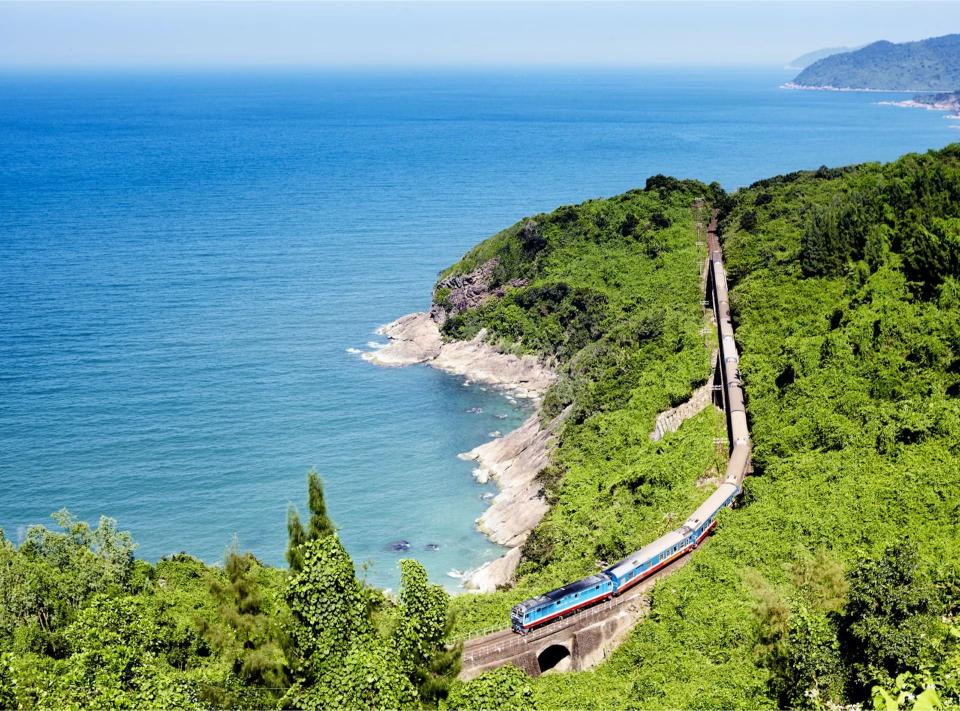
Trains in Vietnam offer large windows that allow you to fully appreciate the country’s beautiful landscapes.
3. Cultural Experience
Traveling by train allows you to interact with locals and experience the daily life of Vietnamese people. It’s a great way to immerse yourself in the culture and make new friends along the way.
4. Eco-Friendly Travel
Trains in Vietnam are a more environmentally friendly mode of transportation compared to buses and airplanes. By choosing to travel by train, you’re reducing your carbon footprint and contributing to sustainable tourism in this country.
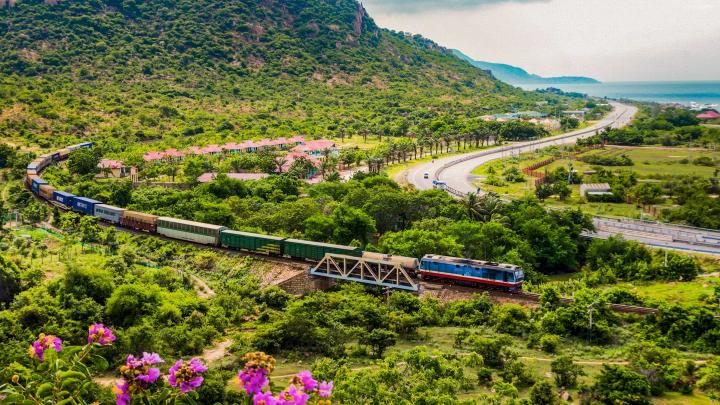
Choosing trains in Vietnam is an eco-friendly option
Top Scenic Train Routes in Vietnam
1. Hanoi to Lao Cai (Sapa)
The train journey from Hanoi to Lao Cai, the gateway to Sapa, is one of the most popular scenic routes in Vietnam. Sapa is known for its stunning terraced rice fields, ethnic minority villages, and the majestic Hoang Lien Son mountain range. The train ride takes around 8-9 hours, typically overnight, offering comfortable sleeper cabins for a good night’s rest.
As you travel north from Hanoi, the landscape gradually changes from bustling cityscapes to peaceful countryside, and then to mountainous terrain as you approach Lao Cai. The morning arrival in Lao Cai is breathtaking, with mist-covered mountains and valleys greeting you as you step off the train.
From Lao Cai, a short bus ride will take you to the charming town of Sapa, where you can begin your adventure.
Main Highlights:
- Overnight journey with sleeper cabins.
- Stunning views of northern Vietnam’s mountains and valleys.
- Easy access to Sapa’s trekking routes and cultural experiences.

The train journey from Hanoi to Lao Cai is a beautiful route leading to Sapa
2. Hanoi to Da Nang (Reunification Express)
The Reunification Express (among trains in Vietnam, this is the longest journey), which runs from Hanoi to Ho Chi Minh City, features several scenic sections, but the stretch from Hanoi to Da Nang is particularly remarkable.
This route takes you through some of Vietnam’s most iconic landscapes, including the famous Hai Van Pass, where the train hugs the coastline, offering panoramic views of the East Sea and lush mountains.
The journey takes about 15-17 hours, so it’s often done as an overnight trip. However, if you want to fully appreciate the scenery, consider taking a day train. As the train winds its way through the Hai Van Pass, you’ll be treated to some beautiful coastal views, making this one of the most scenic trains in Vietnam.
Main Highlights:
- Panoramic views of the East Sea along the Hai Van Pass.
- Opportunity to visit Da Nang, a vibrant coastal city with beautiful beaches.
- Access to nearby attractions such as Hoi An and My Son Sanctuary.
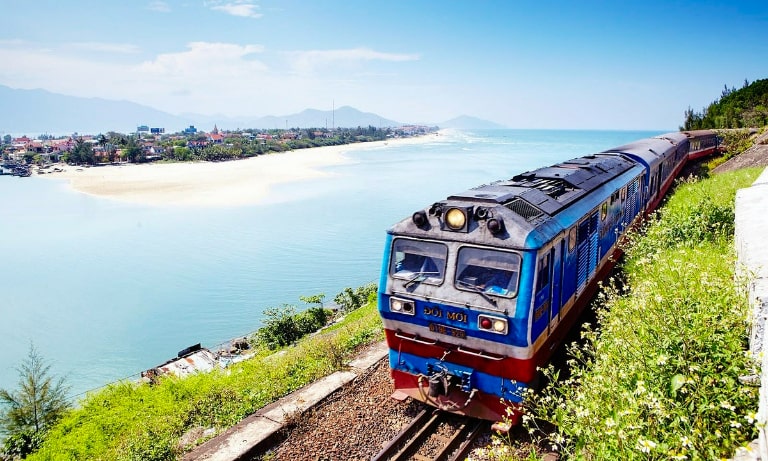
One of the most scenic trains in Vietnam, offering both mountain and coastal views
3. Da Nang to Quy Nhon
Continuing south from Da Nang, the train journey to Quy Nhon is another scenic route that should not be missed. This lesser-known stretch of the Reunification Express offers tranquil coastal views, picturesque fishing villages, and glimpses of Vietnam’s rural life.
Quy Nhon itself is a hidden gem, known for its unspoiled beaches, delicious seafood, and relaxed atmosphere. The train ride takes around 6-8 hours, and it’s best to take a daytime train to fully appreciate the scenery. As the train hugs the coastline, you’ll pass through small towns and verdant fields, with the sea often in view. This is one of the trains in Vietnam that you absolutely must experience.
Main Highlights:
- Quiet and less crowded compared to other train routes.
- Beautiful coastal scenery and rural landscapes.
- Arrival in Quy Nhon, a peaceful beach destination.

This is one of the trains in Vietnam that you absolutely must experience.
4. Hue to Da Nang
Often considered one of the most scenic sections of trains in Vietnam, the route from Hue to Da Nang offers spectacular views of the East Sea and the Annamite Range.
This route takes you through the Hai Van Pass, with the train running alongside the cliffs overlooking the East Sea. The 2.5-3 hour journey is perfect for those looking to experience the beauty of central Vietnam in a short time.
As you leave the historic city of Hue, known for its ancient citadel and imperial tombs, the landscape quickly transitions to lush green hills and coastal views. The train ride is particularly stunning during the early morning or late afternoon, when the sun casts a golden hue over the sea and mountains.
Main Highlights:
- Spectacular views of the Hai Van Pass.
- Convenient connection between two of Vietnam’s top destinations: Hue and Da Nang.
- Short but memorable journey with rich cultural and historical significance.
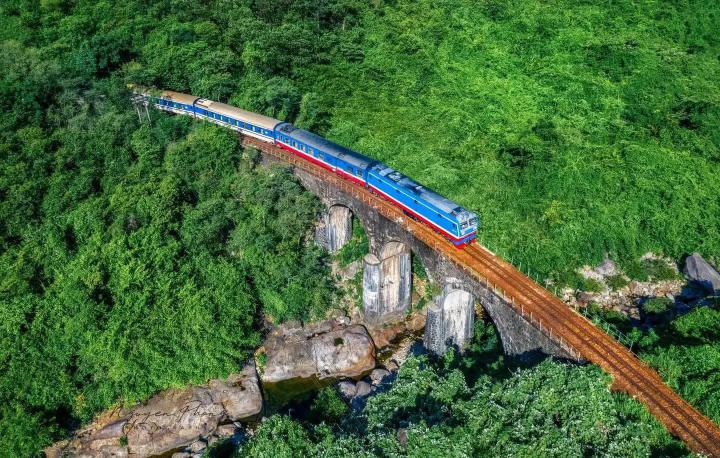
The Hue to Da Nang train route, covering a distance of 110 km and taking about 3 hours, is a fantastic choice for travelers who enjoy scenic views
5. Ho Chi Minh City to Phan Thiet (Mui Ne)
For those looking to escape the hustle and bustle of Ho Chi Minh City, the train ride to Phan Thiet, the gateway to Mui Ne, is an excellent option. This short but scenic journey takes around 4-5 hours and offers views of the countryside, including vast rice fields, rivers, and small villages.
Mui Ne is famous for its sandy beaches, vibrant nightlife, and the unique Red and White Sand Dunes, Whether you’re going there to kite surf, relax on the beach, or explore the sand dunes, try arriving by one of the trains in Vietnam.
Main Highlights:
- Quick and beautiful journey from Ho Chi Minh City.
- Beautiful views of rural southern Vietnam.
- Easy access to Mui Ne’s beaches and sand dunes.

This short but scenic journey takes around 4-5 hours and offers views of the countryside
Tips for Traveling by Train in Vietnam
Traveling on trains in Vietnam is generally straightforward, but here are a few tips to ensure a smooth and enjoyable experience:
1. Book in Advance
Train tickets, especially for popular routes like Hanoi to Sapa, can sell out quickly, particularly during peak travel seasons. It’s best to book your tickets in advance through official websites or reliable travel agencies.
2. Choose the Right Class
Trains in Vietnam offer a range of classes, from hard seats to comfortable soft sleeper cabins. For longer journeys, it’s worth upgrading to a soft sleeper or at least a soft seat for added comfort.
3. Pack Essentials
Bring snacks, water, and entertainment for the journey, especially for long trips. While some trains have food carts, the options can be limited.
4. Embrace the Experience
Traveling on trains in Vietnam is slower than other forms of transport, but it’s also more relaxed and scenic. Take the time to enjoy the views, chat with fellow passengers, and immerse yourself in the journey.
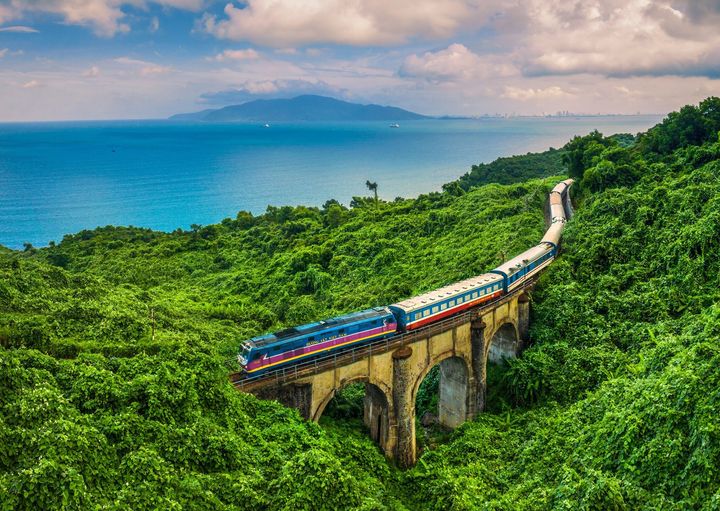
Wishing you the best experience on trains in Vietnam!
As you plan your trip, remember that the true beauty of traveling on trains in Vietnam lies not just in the destinations, but in the journey itself. Each clickety-clack of the wheels, each passing landscape, and each interaction with fellow travelers contributes to a tapestry of memories that epitomize the magic of Vietnam.
Lux Travel DMC hopes you find this article helpful! Contact us to book the best trains in Vietnam experience!
